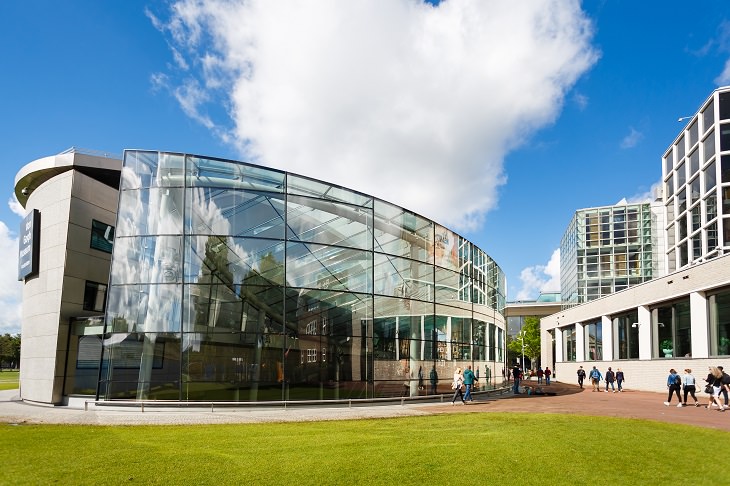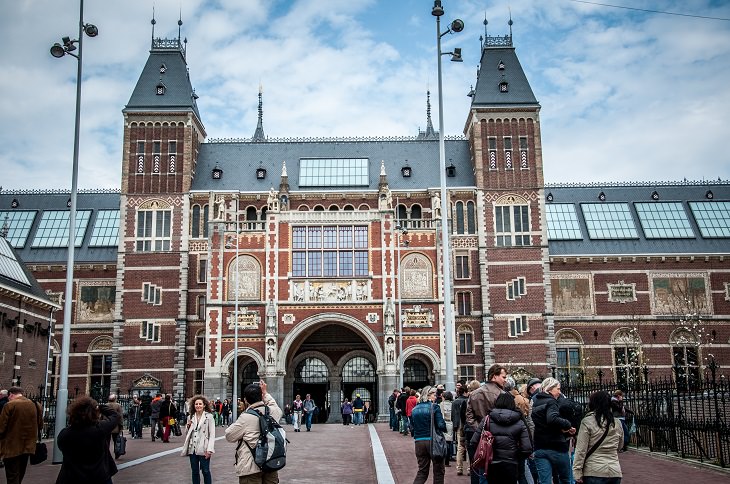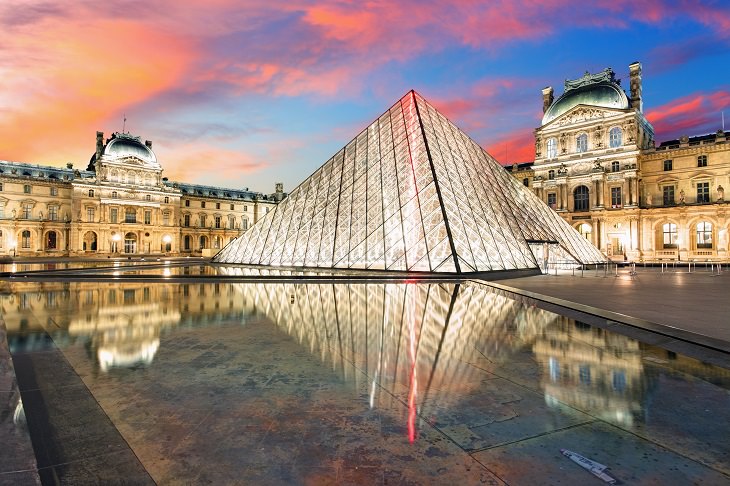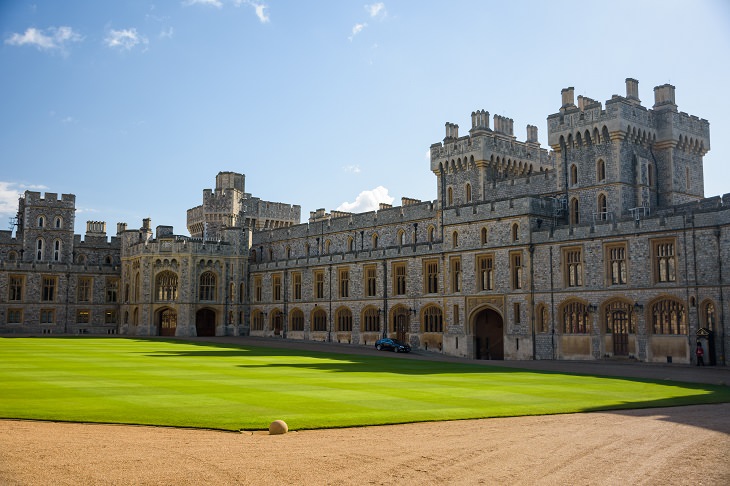
Who says that a vacation can't be educational?
Traveling through major European cities is like stepping back in time, with celebrated historical sites around every corner. From museums that display the great works of some of the world's most legendary artists, to castles, historic districts, and much more, there is certainly no shortage of things to do and learn in the fantastic cities like Amsterdam, Paris, London and Copenhagen.
However, seeking out the most interesting historic locales usually requires a bit of pre-travel research. Thankfully, this handy guide does most of the heavy lifting for you and acts as a starter guide on hotspots for history buffs.
So, if you just happen to love your history, and are planning on going on a history-binge to one of the aforementioned places, you've definitely come to the right place.
Amsterdam, The Netherlands
Van Gogh Museum

Amsterdam is home to the largest collection of work by Vincent Van Gogh, the Netherland's native son and one of the most famous painters in the world. Established in 1973, the Van Gogh Museum houses around 200 paintings and 400 drawings by the artist. Feast your eyes upon "Sunflowers", which dates back to 1889, explore the brushstrokes of his self-portraits over the years, and sit in front of "The Potato Eaters" from 1885, which survived an art heist back in 1991.
Canals
Amsterdam is a city built by the water, with a system of canals that go all the way back to the 17th century. Known as the Grachtengordel, the 400-year-old Canal Ring is a UNESCO World Heritage site and lends a dreamy sense of world charm to the capital city. Previously a practical feature for trade, the canals now play host to numerous events during the year, such as the annual King's Day celebrations at the end of April and the Canal Parade during Gay Pride in August.
Anne Frank House
During WWII, 13-year-old Anne Frank hid with her family from the Nazis in a secret annex of a building on the Prinsengracht Canal. For two years they hid here, while Anne Frank kept a diary the entire time. Eventually, they were found, and Frank died of Typhus in a concentration camp. Though she did not survive, her journal did, and it was published by her father, Otto. Today, the building is a biographical museum dedicated to Frank, where visitors can explore the secret hiding places, listen to the stories of those who helped conceal the family and learn about the history of discrimination and persecution.

Musée d’Orsay
Housed in a Beaux-Arts style railway station built somewhere between 1898 and 1900, the Musée d’Orsay is a stunning exploration of French art and culture. Gaze upon impressionist and post-impressionist paintings by the likes of Monet, Degas, Seurat and Gaugin. This is one of the largest museums in Europe.
Montmartre
Slowly wind you way through the historic neighborhood where many artists had their studios at the start of the 20th century. Visit the gleaming Basilica of the Sacré Coeur and take in the view of Paris down below. You can also find the famous Montmartre Cemetery, where more than 20,000 people are buried - including Edgar Degas, Victor Massé and Dalida.

The Louvre is an iconic part of Paris, its golden facade juxtaposed against the glass pyramid entrance designed by I. M. Pei. Dating back to the 12th century, the building was home to kings and queens until Louis XIV decided that Versailles should be the new home of the monarchy. The Louvre opened in 1793 and had just 537 paintings - which has now grown to more than 380,000 art pieces, including drawings, sculptures and other objets d'art. Masterpieces by the likes of Leonardo DiVinci, Quentin Metsys and Michelangelo can all be found here.
The Catacombs
Beyond the shining lights of the Eiffel Tower and the Parisian shops along the Champs-Elysees lurks a much darker part of the city. The catacombs are an underground ossuary that date back to the 1700s, where the remains of more than 6 million people are contained within an ancient network of tunnels. The skulls and bones that line the walls with artistic precision draw visitors from all over the world.
London, England
Shakespeare's Globe Theater
During his lifetime, Shakespeare wrote 38 plays and more than 150 sonnets. His works still echo throughout popular culture today, from the storylines we still borrow to the words like "champion" and "swagger", which he invented. Take a trip to the Globe Theater and see what it would have been like to see a show in the Bard's time. Built to replicate the theater that stood here over 400 years ago, the Globe puts on plays every summer and also serves as an educational tool complete with exhibitions and tours.

Windsor Castle, just an hour from London by train, will transport you back to the time of lance-wielding knights and court jesters. Built in the 11th century, the castle serves as the weekend home to the Royal Family and is a common location for banquets and other official functions. Take a tour of the space and get a peek into life as a royal, then take a slow walk through the historic cobblestoned streets in the village to see how the other half lives.
Stonehenge
A two-hour car or bus ride from London will take you to Stonehenge, a prehistoric monument and British icon that has long captivated and mystified millions. The ring of sandstone and bluestone rocks in the heart of some glorious English countryside has stood there for thousands of years. Many experts think that Stonehenge was built between 3000 BC and 2000 BC by some Celtic high priests known as the Druids.
Westminster Abbey
Dating back 1,000 years, this Gothic-styled abbey church located in the middle of London is as much a part of British tradition as the monarchy itself. In fact, ever since William the Conqueror became king in 1066, every English monarch has been crowned at Westminster Abbey (with the only exception being Edward V and Edward VIII). When it's not closed for service or regular worship, visitors can tour the abbey and gaze at the stained glass and vaulted ceilings either on their own or as part of a tour.
Copenhagen, Denmark
Vikingeskibsmuseet
Copenhagen is a former Viking settlement with strong Norse roots and a love affair with the sea. Learn all about the seafarers who used to call this place home at the Viking Ship Museum (Vikingskibsmuseet in Danish). Located just 30 minutes outside the city on the fjord of Roskilde, the museum includes rotating exhibits that explore boat building and the Viking way of life.

The Indre By, or inner city, is the heart of Copenhagen. Here you will find historic sites such as the 18th century rococo district Frederiksstaden and the Amalienborg Palace, home to the Danish royal family. Rosenborg Castle is also nearby - a renaissance-era manse surrounded by gardens that are just as old as the castle. Tour the residence, look at the royal portraits, and even get a look at the crown jewels.
Nyhavn
Taking a stroll along the waterfront of Nyhavn is like traveling back in time, thanks to the brightly colored 17th century row houses that line the canal. The oldest house, number 9, goes all the way back to 1681. Also notable is number 20, the former house of critically acclaimed children's writer Hans Christian Andersen. Nowadays, it's a prime spot for socializing, where tourists and locals can grab a drink at one of the bustling waterside restaurants and pubs.
Source: mashable